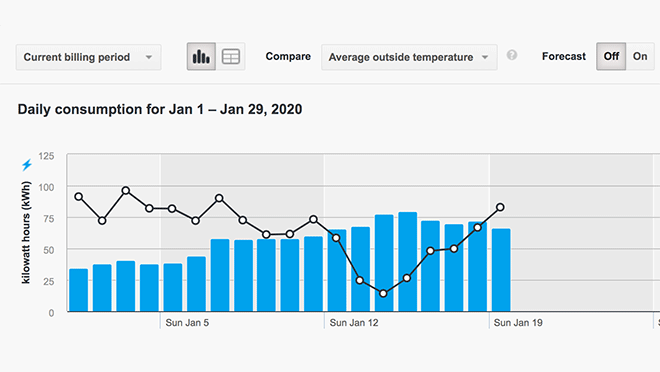Our best winter heating tips for your home

Our deep dives into heating can help you save energy and money this winter
Many of us know that winter can dramatically increase our energy bills. In fact, between increased heating, lighting and other factors, our average winter electricity bill can be 66% higher (or more, in some cases) than during other times of year.
Toss in the fact that many of us are spending more time at home during the COVID-19 pandemic, and there's greater potential for high winter bills. But there are also some tried-and-true ways to stay comfortable while helping to keep costs at bay.
For those using electric heat, space heating alone can account for 40% or more of our electricity bills, so we've spent a lot of time over the years sharing tips on how to make smart heating choices for your home. Here are some of the best:
Turn the heat down, and keep an eye on that thermostat
Winter heating costs can go up by as much as 140% or more compared to the rest of the year. One of the most effective things you can do is learn to control your thermostat effectively.
If you're among the many British Columbians with electric baseboard heating, start by reading one of our most popular-ever stories 10 things you need to know about electric baseboard heaters. You'll learn how they work, how to use them efficiently, and how heating costs rise about 5% for every degree above 20°C.
Also, in February 2019 a BC Hydro report on thermostat use found that four in 10 B.C. couples said they argued over setting the temperature in their homes. The report also sought to correct some common myths with the following:
- Cranking up the thermostat doesn't heat the home up faster than turning it up a degree or two at a time.
- It's not more energy-efficient to keep the thermostat at a constant temperature instead of adjusting it based on the time of day or what activity is going on in the home.
- Turning on a space heater is not always a more energy-efficient way to keep warm.
Other stories that can help you cut your heating costs include:
- Renters can cut electricity costs, too
- 10 things you need to know about home comfort
- Some thermostats are smarter than others
- A look at home heating types, and how to cut costs
- Not dad's slippers: stylish and fun options for staying comfy

Draftproof to keep the heat in and the cold out
A drafty home is an inefficiently heated home. If your place is losing warm air to the outside and letting cold air in, you're wasting heat. Sealing gaps and cracks can help, reducing heat loss and making your home more comfortable.
Learn more:
- Dave's how-to videos on how to seal doors, windows and electrical outlets
- Energy saving kits save money for those who need it most
- Attic insulation upgrades pay off for B.C. homes
- Heat pump, insulation, drive comfort in Sicamous, B.C. home
Use MyHydro to track your electricity use and learn ways to save
Managing your heating habits is easier when you use our online energy tracking tools. Find out how to set up your account online and get specifics on how to use tools in our tracking energy use feature on powersmart.ca.
You can see how much electricity you're using, down to the hour, which can help pinpoint when you're using the most electricity. Learn how the Mitchells cut their energy use by 30% over a year (YouTube video).
If you're not already a member of Team Power Smart, join now. It's not only free, but you'll get access to tips, monthly contests and you can start a 10% Reduction Challenge. Cut your electricity use by 10% or more over a year and you could earn a $50 reward.
Don't have a MyHydro Profile yet? Create one to get started with tracking your electricity use.